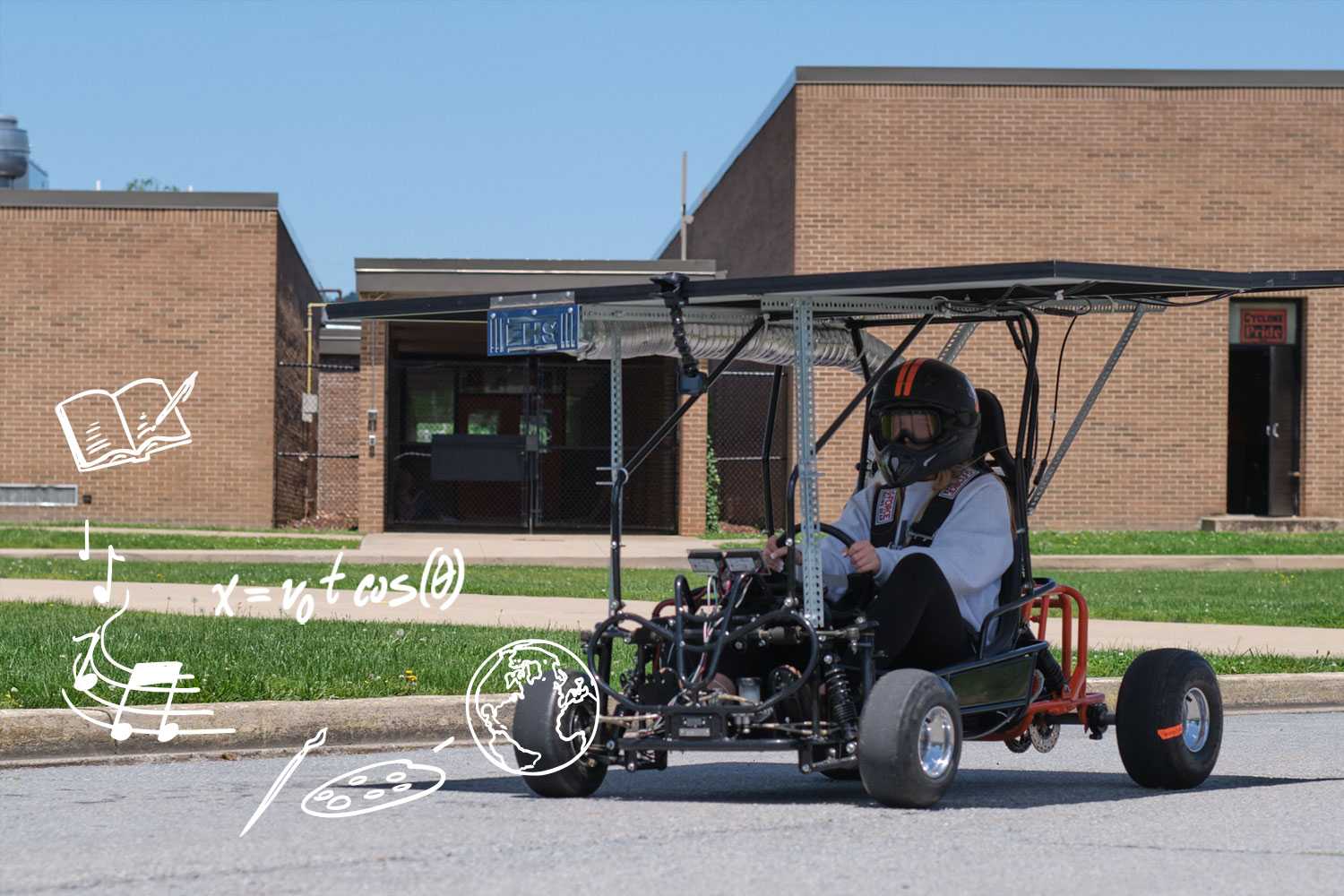1. Time is a resource, not just a constraint.

Rethink the relationship between time and learning.
Fact:
Nearly every state now offers at least some flexibility to award high school credit based on performance rather than seat time.
Source: ExcelInEd.
One hundred eighty days, 6.5 hours a day, 50-minute classes, 8:30 a.m. to 3 p.m. This schedule has been the norm for high schools for nearly 100 years. But true mastery of 21st-century skills requires a more flexible conception of time. How long should classes be and how often should they meet to make the most effective use of time?
In most high schools, classroom time is a constant, but learning—how much and how well students learn—is variable. Nicholas Donohue, president and CEO of the Nellie Mae Education Foundation, urges us to consider a new paradigm in which students have the time they need to succeed and master truly rigorous content. How might each student’s schedule allow them to fill gaps and accelerate learning, strengthen equity, and deepen students’ engagement in their own learning? How might we make time for advisory and other opportunities to build strong relationships—which have been shown to support learning—among students and between students and adults?
Some schools are rethinking the whole calendar as they look for ways to harness time during the school day, week, or year—including after-school, weekend, and summer hours—to provide more learning time for students who need it, allow students to move more quickly and accomplish highly complex projects, and give teachers time to learn and plan together. At Summit Shasta, for example, an XQ school in Daly City, California, that’s part of the Summit Public Schools network, all students enroll in “expeditions,” or immersive two-week elective courses taught four times each school year.
Schools need flexibility to adjust and vary their schedules so students and educators can engage in deep, sustained learning experiences. Freed from the bounds of a conventional schedule-segmented day, students can immerse themselves more in discussion, engage in individual and group learning, work on interdisciplinary projects, and get field experience applying their skills in the community. At Crosstown High in Memphis, the day is organized into longer and more flexible blocks of time to allow for place-based, out-of-school experiences, not to mention interdisciplinary courses such as humanities/human geography or biology/geometry. Crosstown students also select “flex classes” that give them time to explore or cultivate interests such as filmmaking or podcasting.
A later start?
Research suggests that the starting time at schools—as early as 7 AM in some communities—is hurting adolescents, whose natural clocks aren’t ready for an early start. “Adolescents are programmed to fall asleep later,” says Dr. Judith Owens of the Children’s National Medical Center. Because teens need eight to nine hours of sleep, waking for school at 6 a.m. can lead to sleep deprivation, affecting their performance at school and putting them at higher risk of absenteeism—and even depression.
Technical report
Insufficient Sleep in Adolescents and Young Adults: An Update on Causes and Consequences
Dive Deep
![a student looking forward]() Unlocking Time
Unlocking TimeThis example-laden website from Abl Schools offers a “schedule library” and nearly 20 ways schools can innovate with time.
Explore![student smiling]() Scheduling for Learning
Scheduling for LearningEmily Liebtag and Mary Ryerse give an overview of new approaches to scheduling and describe four major features of effective schedules.
Read![student smiling]() Resources for Innovative Scheduling
Resources for Innovative SchedulingExplore this collection of scheduling tools and examples from The Learning Accelerator.
Read![a student listening]() A Schedule Informed by Brain Research
A Schedule Informed by Brain ResearchGlen Whitman tells how his school revamped its schedule for grades 9-12 based on neuroscience research.
Read More
Analyze
How can schools make the most of the time available for student learning, both inside and outside the conventional school day? Many schools across the country are experimenting with new ways of using time. The Unlocking Time project offers a “schedule library” that describes different approaches, plus a list of other ways schools can innovate with time.
Step 1 – Research
Spend some time learning about the various approaches, paying particular attention to the “advantages” and “things to consider” for each. Think about what aspects, if any, you might want to incorporate into your school.
Step 2 – Reflect
Share the results with your team and discuss these questions:
- Which approaches to time and scheduling seem most promising for your school design? What are the advantages and potential shortcomings of each? Do you need even more flexibility than these approaches provide?
- How might you adopt or adapt these models to give students and teachers the time they need for meaningful, engaged learning? What are your scheduling “must-haves”?




